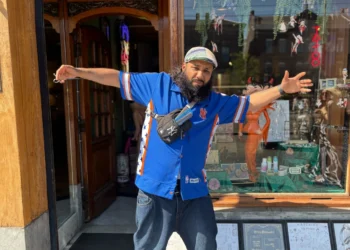This post is also available in:
Español
Nederlands
Chacalón. His name evokes countless emotions and controversies. He was a figure who rose from the deepest slums of Lima, a place where life is a constant battle, and respect is earned through grit or, when necessary, through violence. But Lorenzo Palacios Quispe, known in every corner of Peru as Chacalón, didn’t just earn respect; he earned immortality in the hearts of his people. How is it possible that someone with such a harsh past, surrounded by violence and poverty, came to be considered almost a miraculous saint? Join us in discovering the mythical and real story of the “Pharaoh of Chicha.”
Born in the Streets of La Victoria: A Destiny Marked
Lorenzo Palacios Quispe, better known as Chacalón, was not born into a comfortable or safe environment. His cradle was Cerro San Cosme, one of the most dangerous and rough neighborhoods of La Victoria, in Lima. In this place, where life “means nothing,” he lived among prostitutes, feared criminals, drug dealers, and “cafichos” (pimps). To survive, one had to be a “Faite”, someone who earned respect through fighting, and from a young age, Chacalón knew how to do that.
As a child, Chacalón was what in Peru is known as a “pájaro frutero” (fruit thief): he stole fruits and small objects to survive. Like many other young people from his environment, he became familiar with prison. His body was covered in tattoos, which hid scars from street fights. At that time, tattoos were not a fashion statement; they were survival symbols.
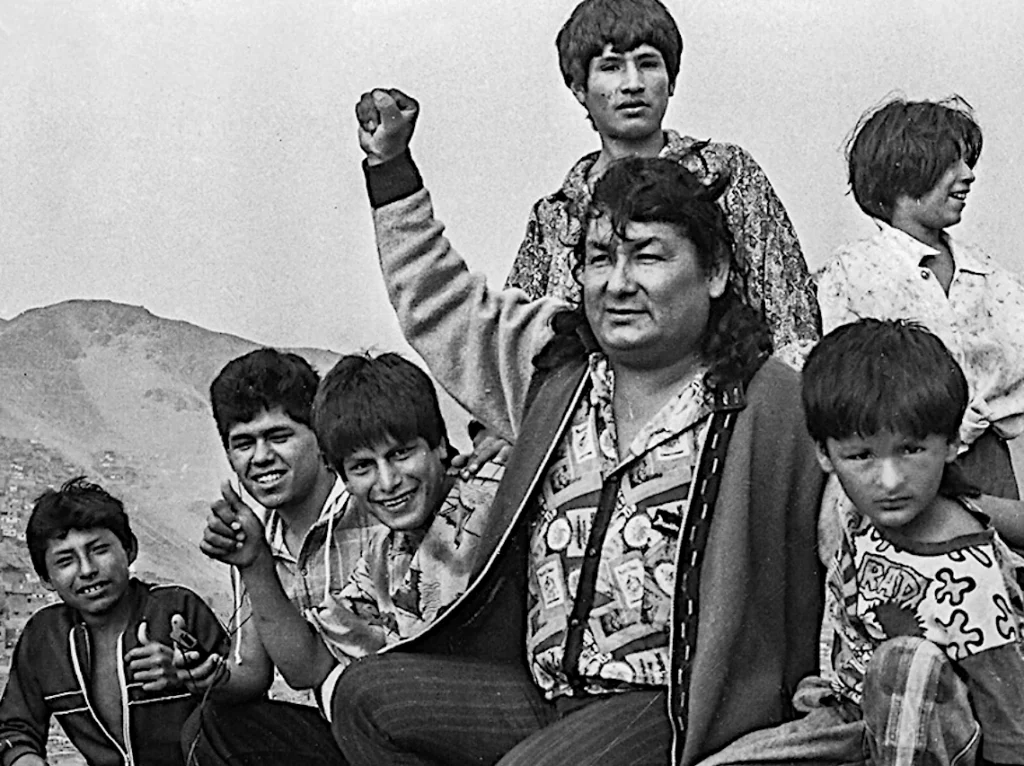
From the Streets to the Stage: The Rise of the Pharaoh
Chacalón found redemption in music. Despite his harsh childhood and youth, he managed to channel his experiences into songs that spoke of love, uprooting, and the harsh reality of migrants in Lima. Despite having neighbors and rivals in the barrio who didn’t share his Andean heritage, he managed to stand out and connect with the people—not only through his music but because he was “one of them,” a man who shared their daily struggle.
How did a “serrano” (Andean man) stand out in a neighborhood dominated by “negros and gansters”? The answer was simple: Chacalón was “from the barrio.” It didn’t matter what the color of his skin was; it was his way of moving in the streets, his attitude, and his daily fight for survival. One key to his success was that Chacalón and his band didn’t just play cumbia and chicha; they also played “salsa dura,” a lesser-known aspect of his career that fascinated his followers. He was a fan of Héctor Lavoe, Oscar de León, and Ismael Rivera, and this influence helped him win the hearts of the more “hardcore” residents of Lima’s barrios.
But Chacalón wasn’t just a musician. At one point in his life, concerned about his future, he studied cosmetology and sewing, skills that allowed him to sew his own colorful shirts, which became an iconic part of his image. This detail reflects a more complex side of his personality: a tough street guy who also had an artistic sensitivity and a sense of style.
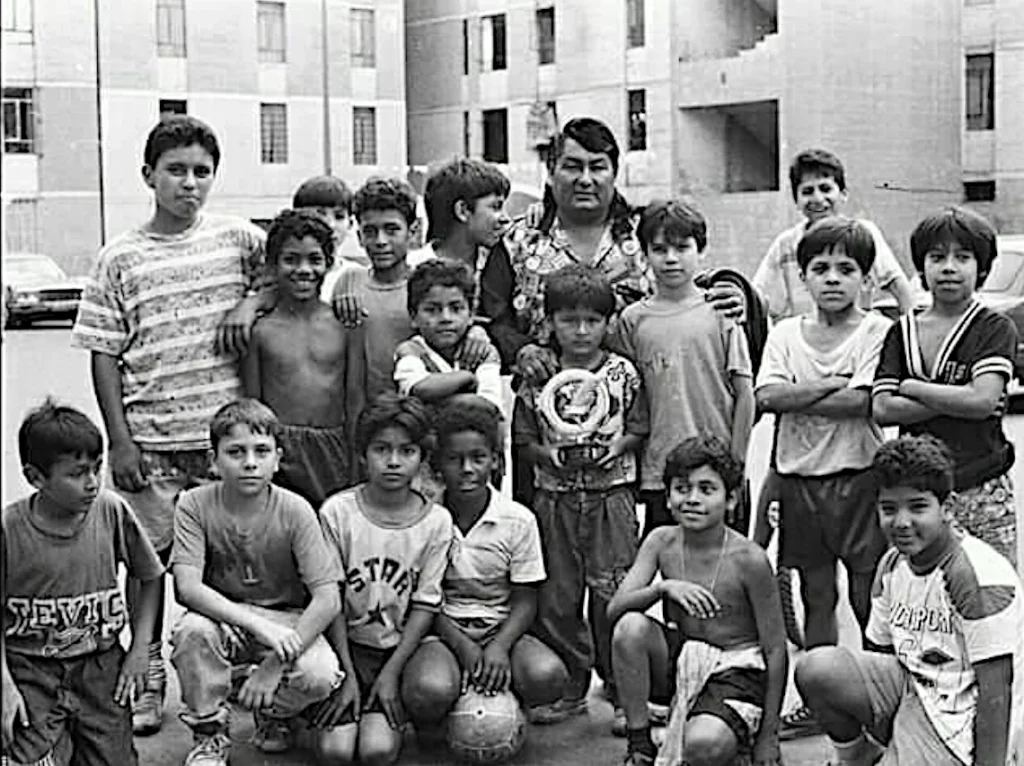
Love for His Family and His Legacy
Despite his fame and chaotic life, Chacalón had an immense love for his family. It’s said that he was the only one of his 15 siblings who managed to provide for the entire family even after his death, giving education to all his children. He always cared for them, even during the most bohemian moments of his life, putting his family above all else.
His humility and charisma made him an adored figure. He never stopped feeling like one of the neighborhood, and he was often seen at the Alianza Lima stadium wearing the blanquiazul shirt, ready to sing a cappella when his fans asked.
The “Pharaoh of Cumbia” and the Miraculous Saint
According to the ChichaWeb page, it was television host Augusto Ferrando who gave him the title “Pharaoh of Cumbia,” inspired by the nickname given to Óscar D’León, known as the “Pharaoh of Salsa” during the same era. Chacalón, with his charm and marginal personality, fit perfectly with this title.
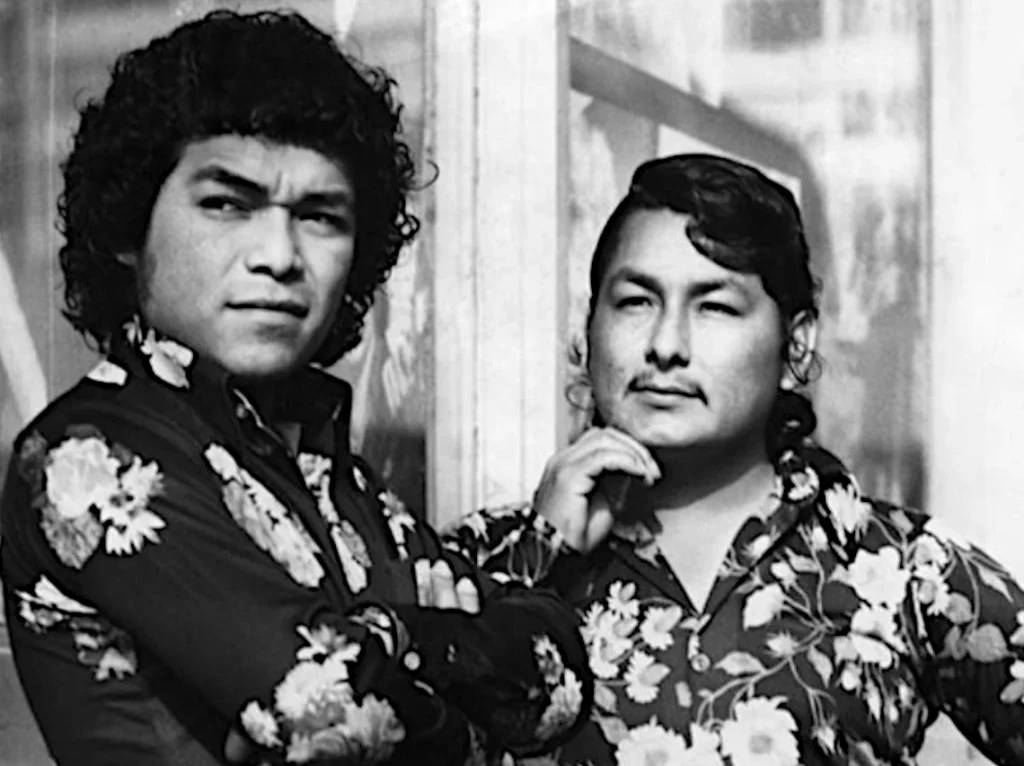
However, Chacalón contributed very little musically, never progressing beyond an amateur musician, and was criticized for his lack of skill compared to other superior musical groups like Los Shapis, Grupo Maravilla, or Vico y su Grupo Karicia, Guinda, and others. In the words of his stage partner and great musician Jose Luis Carvallo: “Chacalón was always off-key and out of beat.” Despite all of this, Chacalón won the hearts of the people and became an unprecedented popular idol. Because of this, they say: “When Chacalón sings, the hills come down.”
What’s most curious about his legacy is not just his music but how Chacalón has been elevated to the status of a popular saint. In Lima’s poorer neighborhoods, many believe in his miraculous power. His tomb is always adorned with fresh flowers and lit candles, and many people pray to him, asking for help in matters such as improving health, protection from problems, work, guidance, and even reconciliation with their partners.
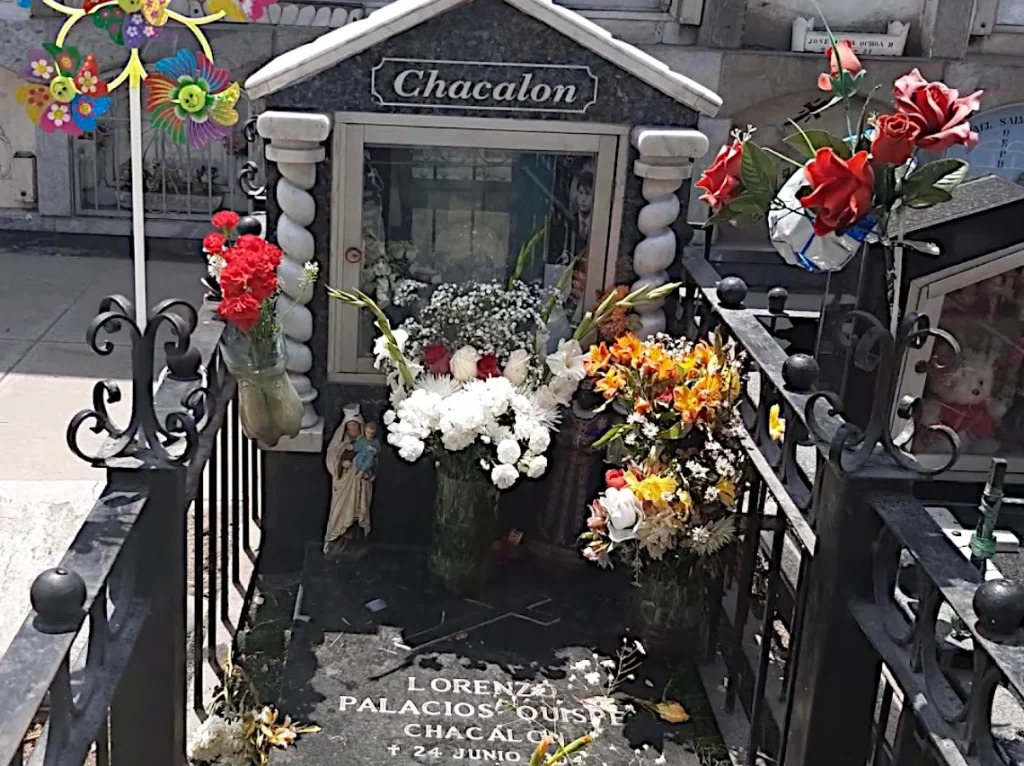
Soy Provinciano: The Anthem That Unites Peruvian Migrants and Latinos
His greatest hit, “Soy Provinciano” (1978), is considered an anthem of Peruvian migrants. With its unmistakable mix of nostalgia and strength, the song tells the story of those who left their homeland, their home, and their customs in search of new opportunities and a better future.
What makes this song unique is not only its impact in Peru but also, more than four decades after its release, it still resonates with many Latin American migrants who share similar experiences. The struggle to adapt to new environments, the longing for their place of origin, and the pride in their cultural roots make “Soy Provinciano” a symbol of identity and resistance for those embarking on the journey to start anew without forgetting where they came from.
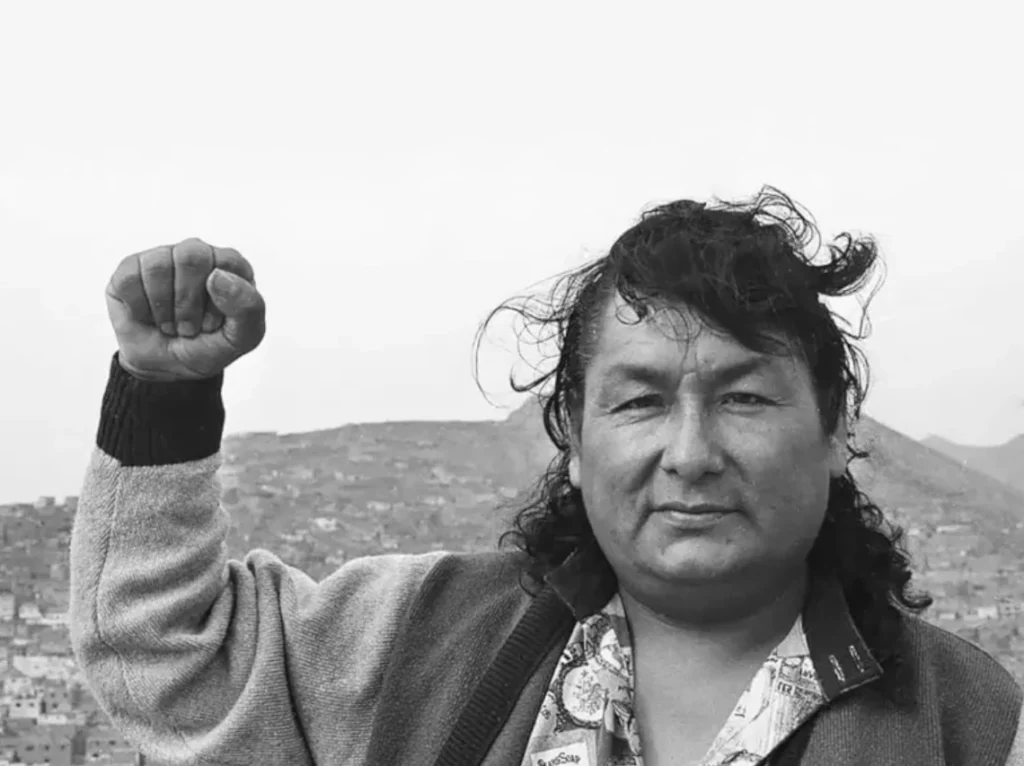
What Makes Chacalón Eternal?
Although Chacalón passed away on June 24, 1994, his legacy remains alive. Today, his music continues to play in markets, combis, microbuses, street vendors, food stalls, kiosks, and popular parties. Beyond his music, Chacalón represents the soul of Lima’s popular neighborhoods, the spirit of resistance of Andean migrants, and the power of music to unite a people. His tomb is now a place of pilgrimage for those who still believe in his mystical power, and his life and image continue to inspire those fighting to overcome adversity.
Other major hits include songs like “Mi dolor,” “Viento,” “Amargo Amor,” “Por qué te amo,” “Soy provinciano,” “Lágrimas de amor,” “Triste desengaño,” and “El muchacho pobre,” all of which are still sung by his fans and keep his legacy alive.
Lorenzo Palacios Quispe, better known as Chacalón, was much more than a chicha singer. He was a legend born from the barrio, from suffering, from humility, and from love for his people. Today, his legacy lives on, and his story is still told by those who knew him and by those who venerate him as a true saint of the people.
Chacalón was much more than a chicha singer. He was a legend born from the barrio, from suffering, from humility, and from love for his people.
What do you think about Chacalón’s life and legacy? Don’t forget to share your opinion in the comments, and if you enjoyed this article, share it with your friends and subscribe to our website for more stories about Peruvian icons.





